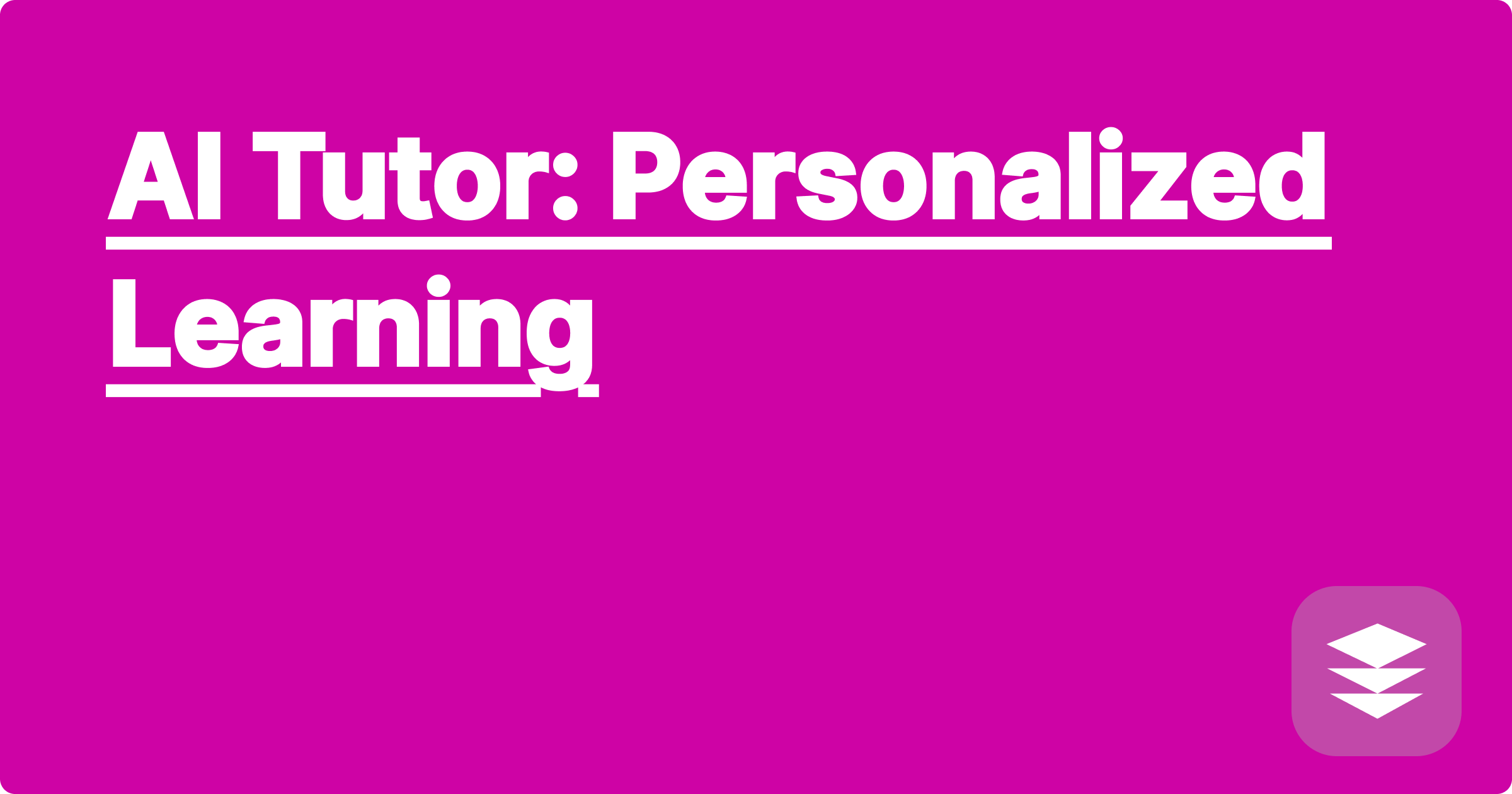
The demanding landscape of STEM education often presents a significant challenge: the struggle to grasp complex concepts at an individual pace. Students grapple with abstract theories, intricate formulas, and vast amounts of information, often feeling lost in a standardized learning environment. This is where the transformative power of Artificial Intelligence steps in, offering a personalized learning experience tailored to each student's unique needs and learning style. AI tutors are emerging as powerful tools that can bridge the gap between standardized education and personalized learning, providing customized support, immediate feedback, and adaptive learning paths that cater to individual strengths and weaknesses.
This personalized approach matters significantly for both STEM students and researchers. For students, an AI tutor can provide the individualized attention often lacking in crowded classrooms, helping them master foundational concepts and build a solid understanding of complex subjects. Researchers can leverage AI tools to accelerate literature reviews, explore new hypotheses, and analyze complex datasets, freeing up valuable time for creative problem-solving and innovative breakthroughs. The ability to access personalized learning and research support 24/7 empowers STEM professionals to learn and discover more effectively, ultimately contributing to advancements across scientific disciplines.
Traditional STEM education often relies on a one-size-fits-all approach, which can leave many students struggling to keep up. The pace of lectures and the sheer volume of material can be overwhelming, especially for those who learn at a different pace or have specific learning challenges. Furthermore, access to personalized support from instructors is often limited due to large class sizes and constrained resources. This can lead to knowledge gaps, decreased motivation, and ultimately, a diminished interest in STEM fields. For researchers, the challenges lie in staying abreast of the ever-expanding body of scientific literature, efficiently managing and analyzing large datasets, and finding the time to delve deep into complex research questions. These challenges can hinder progress and limit the potential for groundbreaking discoveries.
AI-powered tools like ChatGPT, Claude, and Wolfram Alpha offer a promising solution to these challenges. ChatGPT and Claude can be utilized to break down complex concepts into digestible pieces, provide personalized explanations, and offer instant feedback on practice problems. These language models can adapt to the student's level of understanding, providing targeted support where it's needed most. Wolfram Alpha excels at computational tasks, allowing students and researchers to quickly perform complex calculations, visualize data, and explore mathematical concepts in an interactive way. By combining the strengths of these different AI tools, a comprehensive and personalized learning environment can be created.
To begin using AI for personalized learning, start by identifying the specific area where you need support. If you're struggling with a particular concept in calculus, for instance, you can use Wolfram Alpha to explore different examples, visualize the concept graphically, and work through practice problems. Next, formulate clear and concise questions for the AI tool. For example, instead of asking "Explain calculus," ask "Explain the concept of derivatives with real-world examples." This targeted approach will yield more relevant and helpful responses. Then, experiment with different AI tools to find the one that best suits your learning style. Some students may prefer the conversational approach of ChatGPT, while others may find Wolfram Alpha's computational capabilities more useful. Finally, remember that AI tools are meant to supplement, not replace, traditional learning methods. Use them as a support system to enhance your understanding and deepen your engagement with the material.
Consider a student struggling with the concept of eigenvectors in linear algebra. They could use Wolfram Alpha to input a matrix and instantly calculate its eigenvectors and eigenvalues. They could then use ChatGPT to explain the significance of these values in the context of matrix transformations. For example, they could ask, "Explain how eigenvectors and eigenvalues relate to the scaling and rotation of a matrix." A researcher investigating the properties of a new material could use Wolfram Alpha to calculate its thermodynamic properties based on its chemical composition. They could then use ChatGPT to summarize relevant research papers on similar materials, helping them identify potential research directions. Another example could involve a student using ChatGPT to generate practice problems for a specific topic, such as solving differential equations. They could then use Wolfram Alpha to verify their solutions and identify any errors in their calculations.
To maximize the benefits of AI in your STEM studies and research, develop a strategic approach to using these powerful tools. First, focus on building a strong foundation in the fundamentals. AI tools are most effective when used to enhance existing knowledge, not as a shortcut to learning. Next, embrace active recall and spaced repetition techniques. Use AI to generate practice questions and test your understanding at increasing intervals. Then, cultivate critical thinking skills. Don't blindly accept the information provided by AI tools. Always verify the results and consider alternative perspectives. Finally, explore the diverse range of AI tools available and experiment to find the ones that best suit your learning style and research needs.
To effectively integrate AI tutors into your learning journey, start by identifying your specific learning goals and areas where you need support. Then, explore the various AI tools available and experiment to find the ones that best fit your learning style. Remember to use AI tools as a supplement to, not a replacement for, traditional learning methods. Engage actively with the material, ask thoughtful questions, and seek feedback from instructors and peers. By combining the power of AI with effective learning strategies, you can unlock your full potential and achieve academic success in STEM.
Ace STEM Exams: AI Study Planner
AI for Lab Data: Analyze Faster
STEM Prep: AI-Powered Flashcards
AI Coding Assistant: Debug Code
Engineering AI: Design & Simulate